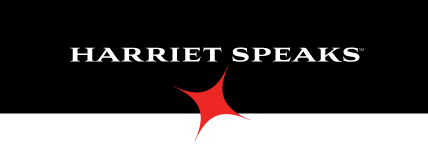Banking on Equity & Inclusion
Note: This blog was originally posted on LinkedIn on April 11, 2017.
One of the biggest challenges in the area of equity and inclusion is language. “What do we say? How do we say it? What if we get it wrong?” These are just a few of the questions that keep diversity folks up at night and many who want to engage in honest conversation on the sidelines. The truth is in today’s environment we get it wrong more than we get it right. Yes, we have been explicit in our diversity related objectives to recruit, retain, and reform cultures; it’s articulated in nearly every mission statement and often discussed. But more than being explicit is required. We must also be specific.
Specificity in diversity means naming the particular group you are talking about and understanding when umbrella and shorthand terms like “minorities” and “people of color” do not suffice. These terms often mask differences in the workforce representation among Asians, Latinos, and Blacks and create blind-spots for diversity teams. They can undermine diversity goals and objectives as the strategies for recruiting, retaining, and creating a culture for each group are not the same. And most damaging is, in the intent to be all-inclusive, such terms can result in erasing a particular group – recreating the very harm that diversity initiatives were designed to fix.
BE LIKE...JAMIE
This week in his annual letter to shareholders, JPMorgan Chase Chairman & CEO Jamie Dimon was explicit and specific. He got it right. Mr. Dimon demonstrated something that every organization can learn when talking about equity and inclusion; the importance moving beyond being explicit and using specific with language to achieve results.
In sharing the diversity numbers of the global company, Mr. Dimon was explicit. Yet, he was also specific when he said:
But there is one area in particular where we simply have not met the standards JPMorgan Chase has set for itself – and that is in increasing African-American talent at the firm. While we think our effort to attract and retain black talent is as good as at most other companies, it simply is not good enough.
The specificity in talking about equity and inclusion is rare in both the corporate and non-profit sectors. However, it is critical to make sure that initiatives are more than nice soundbites and good PR talking points. Peter Drucker said, “What is measured is improved.” But before we can measure anything we have to name it. So a better way to communicate this maxim might be, “What is named can be measured, and what is measured can be improved.” There are reasons why naming doesn’t happen nearly often enough.
JUST SAY IT
Americans are enamored with the idea of having a “big tent.” The thinking is if the tent is big enough then everyone will fit underneath and all of our problems will disappear. Diversity has become the proverbial “big tent.” No longer is the focus of diversity on providing consideration to those who have been historically underrepresented and systematically deprived of opportunities based on their religion, race, ethnicity, gender, and/or sexual orientation. The diversity “tent” now includes an array of factors such as right /left brain dominance, rural/urban communities, introversion/extroversion tendencies, and the like. One consequence of the tent getting too big when it comes to diversity is an inability and unwillingness to use specific language that drives results; we don’t, we can’t, we won’t get specific.
A big tent does not mean that individual groups do not warrant specific consideration. Let’s think about common examples. Consider a continent; there is a large land mass, yet each country has borders. We might have multiple children and/or family members, yet their membership in the group does not erase their individual differences. An elementary school building houses grades K-5, but we would not always put 1st and 5th graders together or speak of them as “the students.” There are times when that might make sense and there are times when it would not. Because of our cultural discomfort with talking about race and ethnicity we have become too comfortable with umbrella terms and ignoring distinctions and differences. This is why so many diversity efforts fail: you cannot improve what you cannot name.
The lack of specificity can be solved by diversity and inclusion professionals asking the following questions when they find themselves using a terms such as “minorities”, “people of color”, and “women of color”:
1. Why am I using an umbrella term at this moment? (Note: Efficiency is not an acceptable answer)
2. Who am I really talking about?
3. Does this statement/issue/situation apply to each distinct group within our diversity initiatives?
4. What is the impact of using a common term in this instance? Are there things that I might overlook?
5. What are the differences within the group of underrepresented individuals that our policies and procedures may not have addressed?
Taking the time to consider these things is an easy step towards having meaningful communications and achieving diversity and inclusion goal and objectives across the board.
This is advice you can take to the bank – compliments of JPMorgan Chase.
----------
Jyarland Daniels, MBA, JD is CEO & Founder of Harriet Speaks℠, a racial equity and inclusion consultancy that offers training, coaching, and communications strategies for non-profits, educational institutions, and corporations. She is a sought after commentator and writer on topics of equity and inclusion. Jyarland has worked for non-profit organizations and Fortune 100 companies in the areas of Marketing, Strategy, and PR. She holds an MBA in Marketing & Finance from the Stephen Ross School of Business at The University of Michigan, Ann Arbor and a Juris Doctor from Wayne State University Law School in Detroit, Michigan.
